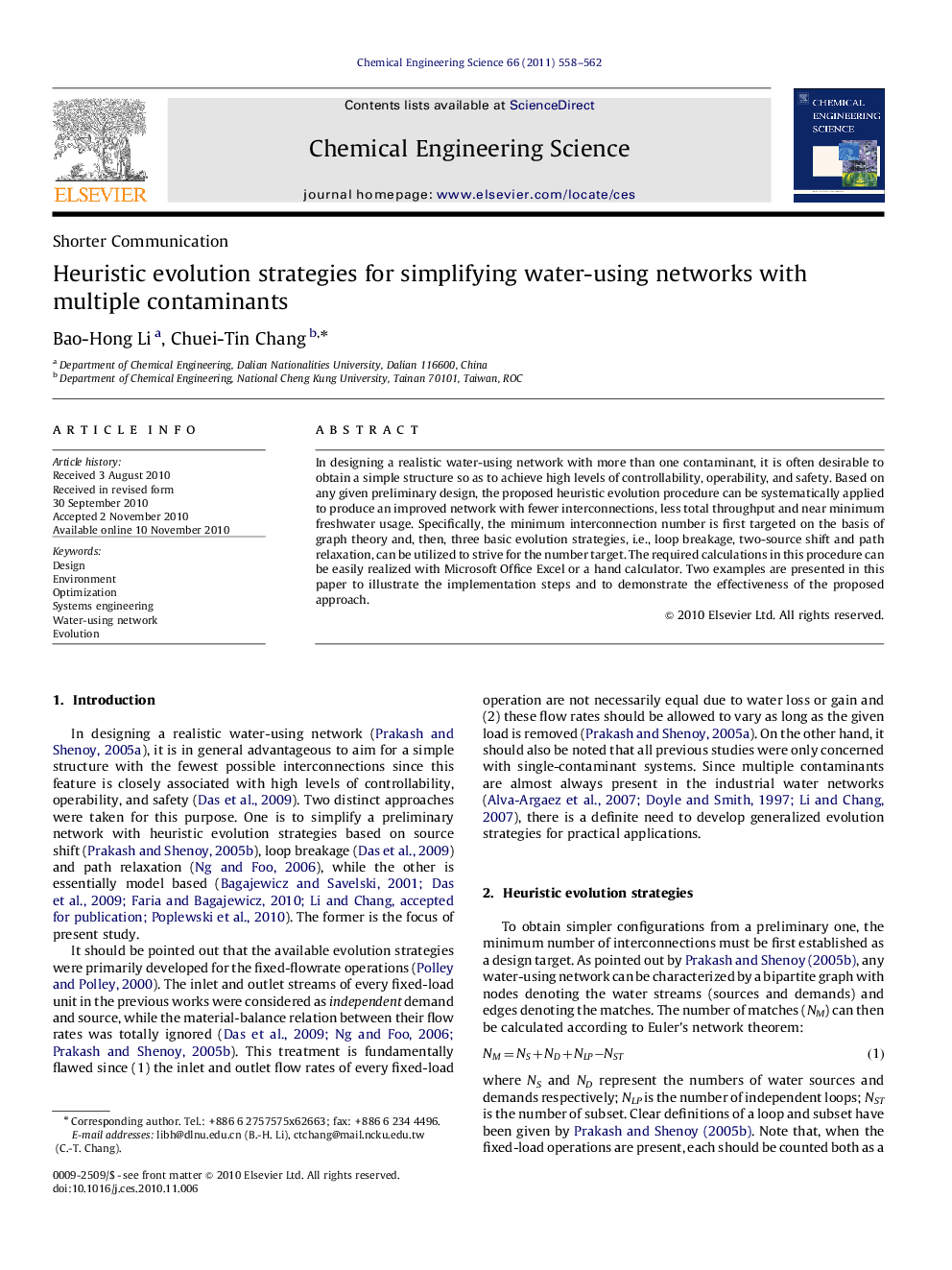| Article ID | Journal | Published Year | Pages | File Type |
|---|---|---|---|---|
| 10262610 | Chemical Engineering Science | 2011 | 5 Pages |
Abstract
In designing a realistic water-using network with more than one contaminant, it is often desirable to obtain a simple structure so as to achieve high levels of controllability, operability, and safety. Based on any given preliminary design, the proposed heuristic evolution procedure can be systematically applied to produce an improved network with fewer interconnections, less total throughput and near minimum freshwater usage. Specifically, the minimum interconnection number is first targeted on the basis of graph theory and, then, three basic evolution strategies, i.e., loop breakage, two-source shift and path relaxation, can be utilized to strive for the number target. The required calculations in this procedure can be easily realized with Microsoft Office Excel or a hand calculator. Two examples are presented in this paper to illustrate the implementation steps and to demonstrate the effectiveness of the proposed approach.
Related Topics
Physical Sciences and Engineering
Chemical Engineering
Chemical Engineering (General)
Authors
Bao-Hong Li, Chuei-Tin Chang,
